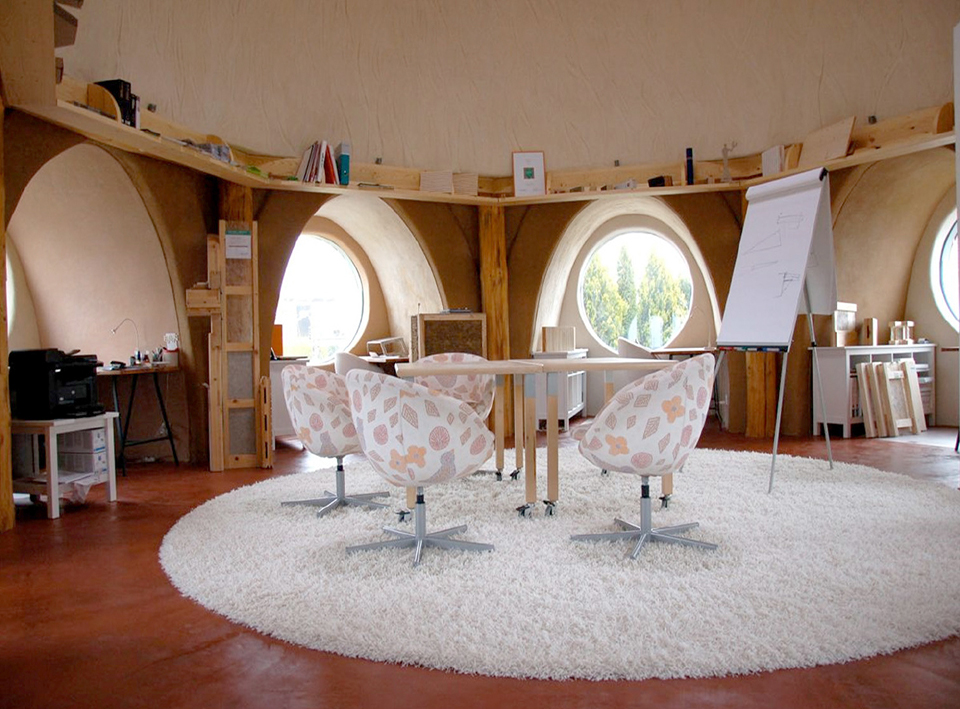Healthy office

The face of a modern office
The modern work space of today is not to be seen in many of our state institutions. At workplaces, such terms as spontaneous stand-ups or interactive workshops were given. These are random working meetings devoid of office chairs and various experiential and practical courses where the group, for example, solves a model problem. Indeed, to support new workflows that encourage employees to work together on a project, there are trendy “coffee shops” – so-called coffices. This trend from abroad encourages employers to give workers greater freedom and create the opportunity to meet colleagues not only through mail communication but also in a relaxed style over coffee. The coffee cult, among other things, is part of the working life, and therefore the coffee maker and its surroundings are the centre of the workplace. And what does the modern office look like? It is flexible, interactive, supports team work, communication, easy to change, but also offers privacy features.
Facts about open large offices
In modern workplaces, emphasis is now on teamwork. Large or multi-place offices are preferred, which is also more economical. Money is saved on partitions, and more people can fit in large areas. The advantage is that, in open spaces without doors, supervisors have a better overview of their staff. The same goes for the workers with each other. The disadvantage of working in an open space is that workers may disturb each other during calls, meetings, etc. Otherwise, this is a plus when it comes to creative and team work. Creative minds can work on developing new ideas individually or in a group, so they can work on the principle of a creative energy flow. This is praised by advertising, design and architectural studios. Open offices are unsuitable for people with concentration-intensive jobs, such as analysts, accountants, IT specialists, to name but a few. Whether it is a creative studio or a call centre, the noise level is not to exceed the stress threshold. Excessive noise affects both the hearing and the entire nervous system. It is a stressful factor that can cause high blood pressure, circulatory system disorders, depression, neurosis and others. That is why it is good to be able to spend some time out of noisy space, for example in silent rooms or outside large offices in separate quiet boxes.

Everyone needs their territory
Despite the strong trend of creating large workgroups in open spaces, the employer should not forget the importance of personal territory. It means that every employee needs at least a piece of space just for himself/herself. It can be a desk, a shelf, just a space that “belongs” to them only. It is good if they can adapt this space to their needs and personalise it; therefore, to “make it cosier” with their personal belongings in order to help them create a sense of well-being. In large open workplaces, it is appropriate to separate the workplace by a curtain, a partition, or furniture. The question is also the size of the work-group. According to anthropologists, the over-sizing of the immediate working group is negatively related to employee satisfaction, productivity and regular attendance. The reason is prosaic. People feel better in small work-groups because relationships in the workplace are more intimate, personal, spontaneously experienced, and furthermore complemented by well-arranged space.
Healthy office with a sense of nature
Furniture made of laminated chipboard dominates most workplaces and offices. Of course, this is due to several reasons: economical, because of the easy maintenance of these materials or for their good resistance. In this section, however, we are focusing on the theme of healthy design, design with respect to man. Like at home, natural materials should have their place in the office. However, it seems as if they were forbidden in a normal office environment. This is usually due to a higher purchase price, more demanding maintenance, and fear of patina on their surface after longer use. The impact of natural materials on physical and mental health is as important at home as in the workplace. The body feels natural, responds in a relaxed manner, and can even rest in their presence. For the body, it is nice to touch the massive board of a desk or sit in a chair upholstered in cotton. For the eyes, it is relaxing to watch the natural structure of wood, clay plaster or stone facing. The sound of closing and opening a wooden door is more comfortable and softer than in the case of artificial materials. But can a timeless office space be made of natural materials at all? Yes, it can be used if noble and non-refined natural materials are used, even at the cost that their surface may need to be renewed over time. In this spirit, designers and architects in Hrubý Šúr, have designed their studio.
Nature or natural character in the workplace
Nature can be brought to the workplace by the use of natural materials, as well as interior greenery or decoration of natural materials. Greenery has a positive effect on concentration and reduction of sickness rate. In addition, it can absorb emissions from furniture, carpets, computers and other office equipment. An important factor in the well-being of employees is contact with the exterior: having a view of the outside world and it is very important to be able to open windows, regulate temperature and air conditioning. Employees like to work with their own comfort and set the environment at the workplace, which suits them. This prevents situations where a single air conditioner, often set to too low a temperature, does not meet individual needs. The result is employee sickness and fluctuation. The natural environment can also be achieved by choosing the right colours. Offices often use two extremes: absolutely neutral – white, gray, cream with minimal vivid colour areas, or extremely colourful areas in corporate colours. These are often garish and negatively stimulating. Somewhere in between is a golden middle way. Large areas of neutral colour, but for example upholstery of chairs or sofas and accessories can be in nice colour shades.























